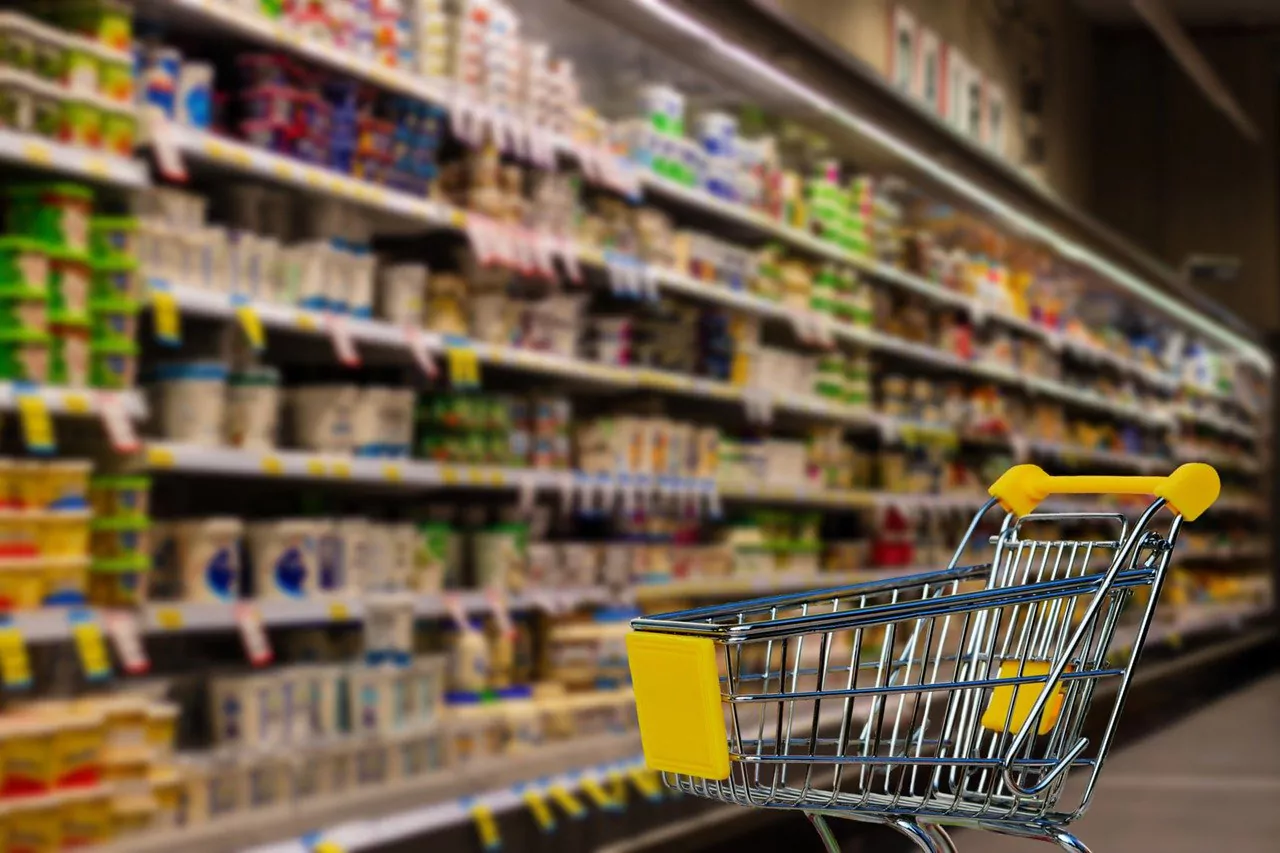The global food price index hit a new 10-year high in October, and the news that the Chinese government is urging people to stock up on food and basic necessities has some Romanians worried. One former minister of agriculture is posting worrying messages on Facebook: “the food crisis is knocking at the door”.
Urmărește mai jos producțiile video ale Economedia:
- articolul continuă mai jos -
Rising costs, disruptions in the supply chain, the effects of the pandemic and declining purchasing power, the prospect of rising wages – these are all putting pressure on farming businesses. But to what extent is it appropriate to talk about “crises” and make provisions? What are the big issues for producers and what are the prospects? We tried to find out from representatives of several branches of the industry, who explained to Economedia the difficulties producers are facing at the moment. It’s worth noting at the outset that no one goes so far as to say that products will disappear from the shelves. Instead, industry representatives from various sectors are talking in unison about price increases: on feed, fertilizers, raw materials, packaging, energy, and fuel.
Background
The global food price index continued to rise in October for the third consecutive month, reaching a new 10-year high, the UN Food and Agriculture Organization (FAO) announced a few days ago. The rise was mainly influenced by higher prices for cereals and vegetable oils. The FAO publishes its own Food Price Index monthly, which measures changes in the prices of a basket of food consisting of cereals, vegetable oils, dairy products, meat, and sugar. In October 2021, this index rose to 133.2 points, the highest level recorded since July 2011, 3.9% above the level recorded in September this year and 31.3% higher than in October last year.
Also a few days ago, the markets were buzzing with news that the Beijing government is urging people to stock up on food and basic necessities to meet daily needs and emergencies.
The prospect of a food crisis has not gone unnoticed. Some shoppers in Romania have also rushed to buy less perishable products in larger quantities.
Former agriculture minister Petre Daea took to Facebook to issue a “warning” message that Romania could face a food crisis as rising prices for agricultural products are seriously hampering farmers and food workers.
“The food crisis is knocking at the door! I don’t like nihilistic approaches or doomsday claims! But, unfortunately, the seeds of the food crisis are being sown. Let me explain: the increase in prices of inputs used in agriculture, from single to quadruple and, moreover, puts serious obstacles to farmers and workers in the food industry,” Petre Daea wrote on Facebook on Thursday.
According to him, in fertilizers, the price of ammonium nitrate increased from 900 lei to 3,920 lei /ton. Also on the rise are the prices of insect fungicides, diesel, agricultural machinery, spare parts, and services for all of them. On the other hand, bakeries using gas, from contracts of 6,000 lei/month for gas, have moved to “happy contracts today” at 30,000 lei/month.
Food industry employers: Costs rising, consumption down / No raw material supply problems
There are no raw material supply problems so far, says Sorin Minea, president of the Romanian Employers’ Federation of Romanian Industry (Romalimenta) and chairman of Angst, one of our largest producers of sausages.
“There are no supply problems at the moment. Costs have risen, prices are being discussed, but there is a bottleneck. We have to report price increases to the supermarkets and these are negotiated. Some have gone up, others are under discussion. But under no circumstances are we talking about 30% increase levels, as some people say. Maybe it could be 6-7%, but still single-digit increases,” says Minea.
Moreover, price increases are difficult to negotiate in the context of falling consumption, which is already visible. “Because of wave 4 of the pandemic, the increase in utility prices, we are already seeing a drop in sales volume,” says Romalimenta’s president.
Companies in the food industry have major problems with packaging or machinery, where there are disruptions in the supply chain. For example, it sometimes takes 5-6 months for a machine to arrive in Romania. “They don’t come to you from one month to the next,” says Minea.
Under the current conditions of rising costs (raw materials, utilities, packaging), a price increase is almost inevitable, but it will most likely be felt at the beginning of the year. Especially as wage increases are coming, which will also have an impact on companies. “Pricing procedures and negotiations take time, December is usually a discount, shopping month. So we’ll probably see increases early next year,” Minea predicts.
“There may still be passing, one-off increases, stores could raise prices. Everybody is talking about price increases, there have been new costs, utility increases, wage increases. But we haven’t had any problems with the supply of raw materials. We have cereals, milk, meat. On the other hand, the price of packaging, for example, has tripled. Then electricity consumption will have less impact than wage increases. I would say that it is not the utilities that are giving us the coup de grace. There are also construction prices that have doubled and we’re all working on investments,” says the representative of food industry bosses.
From butter to margarine in the dairy industry
Farmers and producers are also facing difficulties in the milk sector, where consumption is expected to fall, says Daniel Manciu, manager of the Calea Laptelui cooperative, which brings together 28 livestock farms in Cluj.
“The impact on milk producers is not so great yet, but problems are felt throughout the production chain. Fertiliser prices have risen by 300%, and if the cost per hectare of land increases so much, farmers won’t be able to afford it. What do we do, go back to manure? That’s what those who have it can do. Productivity does not increase by 300%. The impact is on the processor, he has budgeted for a 20% increase, but after the new contract the electricity bill is five times higher than before. The impact will be seen at the shelf. The processors have already inflated prices,” says Manciu.
But he says it’s not the case that we should still imagine shops with empty shelves. “We don’t take butter anymore, we take margarine, we go back to the idea of survival. There will be products on the market, but different gimmicks will be found, there will be more and more products with vegetable fats, substitutes, powdered milk,” says Manciu.
Consumption is also expected to fall. “For now, it’s somewhat inertial, sales are strong, but the winter bills are coming. Purchasing power will decrease. When you can no longer afford it, you don’t go to a 4-star hotel, you go to a 2-star if you still can. So will food – you don’t get an expensive yogurt, you get a cheap one. Production costs go up, utilities go up, wages go up, purchasing power goes down, what do you do? You’re looking at profit, but in this business, it’s not huge either, we’re talking 10-12%,” says the cooperative manager.
Pork producers: “We are facing two pandemics, we don’t know what’s next”
“The outlook for us is bleak, if not tragic,” says Ioan Ladoși, president of the Romanian Pork Producers’ Association.
“We are facing swine fever and now all these increases are coming – electricity and gas prices. Every farm needs these utilities. Just think of a breeding farm, where we have 1 kg piglets – they need heating. Feed prices are up 40% on last year,” says Ladoși.
“What we can do is offer the market as much production as we have left, which is very little. We can’t control prices in the wholesale market,” he adds.
Ladoși notes that the Romanian industry has lost 21 companies, 10% of farms, to plague recently. “At European level there is overproduction, more and more is being imported. For example, Germany is a big producer, it can no longer sell to China. It sells to us. We are facing two pandemics, we can no longer cover domestic demand with what is left after swine fever. We don’t know what’s next. We are waiting, we are involved as much as we can in any project to stop swine fever. We have discussions in parliament to clarify the legislation, to establish what producers have to do, when and how,” says the pork producers’ representative.
Bread industry: “We have to work at the freezing point”
“We can’t expect good things,” says Aurel Popescu, president of the Romanian Employers’ Association of the Bakery, Confectionery and Pasta Industry (ROMPAN).
“Our costs are very affected by the increase in prices for utilities, energy, gas, fuels, raw materials. The price of raw material has increased by 50% compared to last year, we are talking about the highest price per tonne – 300 euros, although production is good. But this is the world market. Those who have raw material or trade are happy. We can’t put in all these costs, that would double the price of bread. We have to work on the frost line, at zero profit. Sales are falling, people have no money. There’s the pandemic and the increase in expenses and the winter bills haven’t come in yet. Fertilizer prices are four times what they were last year. If they pay four times as much for fertilizer, you’ll see something in the finished product. We don’t expect nice things. If energy, fuel, gas prices go up, everything that moves gets more expensive. If you can’t afford to take fertiliser at the amount you used to take, you’ll reduce production. This year we have a world deficit of 22 million tonnes of wheat already. It may increase,” says ROMPAN’s president.
But he says there’s no need to be alarmed that bread will disappear from the shelves. “I don’t think there will be problems in Romania, i.e. we will have production, but all costs are rising. If you go from 1,000 lei on fertilizers to 4,000 lei, and if there is a drought… bankruptcy is written on you,” concludes the representative of the employers in the bakery industry.

 Sursa foto: Pixabay
Sursa foto: Pixabay





























